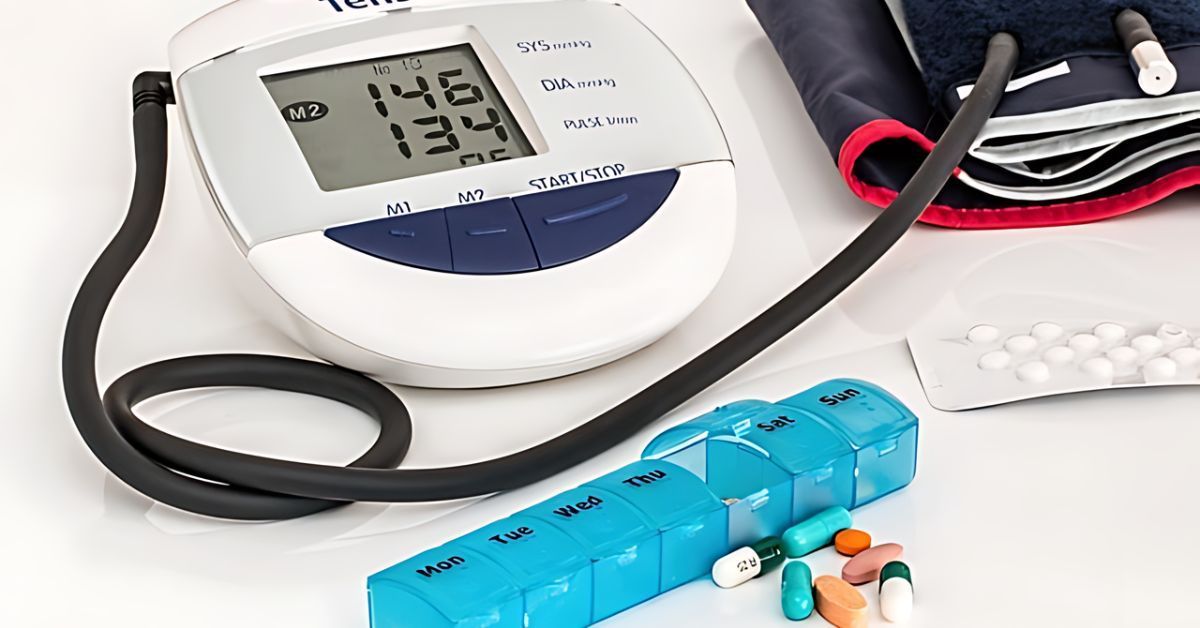What Does Medicare Cover?

As of March 2023, 65 million people are enrolled in Medicare. That’s around 18.7 percent of the US population.
Medicare brings valuable benefits to millions of people, but most don’t even know what it covers.
Whether you’re 65 or just getting started with Medicare, it can feel like you’re navigating a maze. There’s so much to keep track of—premiums, enrollment dates, deductibles, and more.

Knowing the basics of this program can help you maximize your benefits.
Medicare is split into different parts, each covering specific types of health services. By becoming familiar with what Medicare covers, you can better plan for your future healthcare needs.
Key Takeaways
- Medicare has four main parts: Part A, B, C, and D.
- It covers hospital, outpatient, and prescription drug costs.
- It is mainly for individuals aged 65 and up, and those with specific disabilities.
- Understanding your coverage helps in planning for healthcare needs.
Medicare Simplified

Let's break down the basics of Medicare in a way that's easy to follow.
The Centers for Medicare and Medicaid Services (CMS) oversees not just Medicare but also other programs like Medicaid services and the Children's Health Insurance Program.
Medicare is a health insurance program for seniors aged 65 and older. But younger people with certain disabilities can qualify too. It’s divided into different parts, each covering specific services and having its own costs and enrollment periods.
Understanding Medicare Parts
Medicare has four main parts. Part A covers inpatient hospital stays, skilled nursing facility care, and some home health care. Medicare Part B includes outpatient care, doctor services, and some preventive services. Together, Parts A and B are often called Original Medicare.
Since Original Medicare has its gaps, Part C offers an alternative. Also known as Medicare Advantage, it offers a combined package of Part A and Part B with some additions like vision and dental coverage. This plan is typically offered by private insurance companies.
Lastly, we have Medicare Part D. This part is for prescription drug coverage. You can add it to Original Medicare or get it through a Medicare Advantage plan that includes drug coverage.
Medicare Coverage Details

Medicare provides various types of coverage for its beneficiaries. It includes hospital and inpatient care, medical and outpatient services, prescription drug coverage, and additional benefits through Medicare Advantage plans. Each type of coverage offers unique benefits and services.
Medicare Part A Coverage
Inpatient Hospital Care
If you need to be admitted to a hospital due to surgery, Medicare Part A (hospital insurance) has your back. You are covered for up to 90 days for each benefit period. Your benefit period begins on the admission day and ends after you've been out of the facility for 60 days.
Any hospital-related expenses, including room fees and meals, are typically covered by Part A hospital insurance.
Once you meet your deductible, Original Medicare pays in full for days 1 to 60 that you are in a hospital. For days 61 to 90, you will pay daily coinsurance.
If your stay extends beyond 90 days, you can tap into your 60 lifetime reserve days. These are extra days covered by Medicare, but they come with a daily coinsurance and aren't renewable.
Skilled Nursing Facility Care
Hospital insurance also covers services provided in a skilled nursing facility (SNF). This includes room and board, administration of medications, and wound care.
In each benefit period, Medicare will cover your expenses for up to 100 days. To qualify for SNF coverage, you must spend at least three days as an inpatient within 30 days of being admitted to an SNF.
Limits and conditions apply, so make sure to check out Medicare’s website to learn about Medicare Part A coverage.
Hospice Care
If you or a loved one are facing a terminal illness, hospice care can provide comfort and support. It focuses on palliative care rather than curative treatment.
Medicare hospital insurance covers four levels of hospice care: routine home care, continuous home care, general inpatient care, and respite care.
You’ll pay nothing as long as your doctor or other health care provider certifies you need hospice care. Once your hospice benefit starts, Medicare will cover the associated costs, including medical, emotional, and spiritual support.
Home Health Care
Part A also includes limited home health care services of up to 100 days. Covered services included skilled care, physical therapy, occupational therapy, and more.
To qualify, you must have been an inpatient for at least 3 days within 14 days of getting home health care.
What is not covered by Medicare Part A:
- Outpatient care
- Doctor fees
- Prescription drugs
- Long-term custodial care
- A private room (unless medically necessary)
- Private-duty nursing
- The first three pints of blood (unless you or someone else donates blood to replace what you use)
- Personal items (such as razors or slipper socks)
Medicare Part B Coverage

Medical and Outpatient Services
Also known as medical insurance, Part B helps you manage your healthcare by covering any doctors' services or supplies that are medically necessary. These include regular check-ups, outpatient services, and diagnostic tests such as x-rays and lab work.
If you have diabetes or high blood pressure, Part B medical insurance will cover your regular doctor visits to help manage these issues.
You automatically qualify for Medicare Part B if you’re eligible for premium-free Part A. However, you’ll pay monthly premiums for Part B, as well as out-of-pocket costs like deductibles, copays, and coinsurance.
Preventive Services
During the COVID-19 pandemic, flu shots became more important than ever. Part B medical insurance covers preventive services like flu shots or pneumonia vaccines. These services are designed to detect health issues early and prevent illnesses.
Mammograms, diabetes screenings, and pap tests are also included in the coverage. This allows you to stay on top of your health without worrying about the cost of essential check-ups.
Durable Medical Equipment (DME)
Part B also covers durable medical equipment, like wheelchairs, walkers, and oxygen tanks. You can either rent or purchase DMEs through a Medicare-approved supplier.
What is not covered by Medicare Part B:
- Nonprescription drugs
- Routine eye, hearing aids, and hearing exams
- General dental care
- Long-term care
- Cosmetic surgery
- Massage therapy
- Routine physical exams
Medicare Part C Coverage
Medicare Advantage Plans offer additional benefits not covered by Original Medicare. Compared to the first two Medicare parts, Part C plans provide all Part A and Part B benefits and with additional benefits:
- Vision care (routine eye exams and glasses)
- Dental care (cleanings, fillings, and dentures)
- Hearing care (hearing exams and hearing aids)
- Wellness programs (wellness programs, gym memberships, and nutrition counseling)
These plans come in several types, each with its own network and coverage rules:
- Health Maintenance Organization (HMO) Plans
- Preferred Provider Organization (PPO) Plans
- Private Fee-for-Service (PFFS) Plans
- Special Needs Plans (SNPs)
When you're looking at different service plans, remember that costs and availability can change quite a bit. It's smart to compare what's offered in your area to find the best fit for your needs. Keep in mind that some plans might limit you to certain doctors and healthcare providers.
Medicare Part D Coverage
Lastly, we have prescription drug coverage. If you're on Original Medicare, you can sign up for Medicare Part D.
Each plan has its formulary or a list of drugs it covers. Usually, you'll pay less for generic drugs compared to brand-name ones. For example, if you take medication for cholesterol, your Part D plan could help cover some of the costs.
Just be aware of the coverage gap, often called the "donut hole." This coverage gap means you’ll pay more for your drugs after you've reached the temporary limit.
While Medicare Part D is optional, make sure you enroll the first time you become eligible. If you delay enrollment, you could face a Part D penalty. This will increase your monthly premiums, making your healthcare more expensive in the long run
Medigap and Medicare Supplement Plans
Original Medicare doesn't cover everything, so you’ll have some out-of-pocket costs like deductibles, copayments, and coinsurance.
While Medicare Part A covers hospital stays, you usually have to pay a deductible first. Part B covers doctor visits and outpatient care but comes with a monthly premium and 20% coinsurance for most services. These copayments or coinsurance costs can add up quickly.
To help with these costs, many people opt for a Medigap policy or Medicare supplement insurance. These are offered by private companies and help cover the gaps in Original Medicare.
There are different Medigap plans labeled A through N, each offering various levels of coverage. While the benefits offered under Medigap are standardized, premium rates vary by state and zip code.
Frequently Asked Questions About Medicare Coverage

Medicare provides various types of coverage, each designed to meet different healthcare needs. Below, you'll find answers to some common questions that many people have about Medicare.
What services are included in Part B (medical insurance)?
Medicare Part B mainly covers medical services and outpatient care. This includes visits to your doctor, preventive services like flu shots, lab tests, and mental health care. It also covers some home health services and durable medical equipment, like wheelchairs or walkers.
What are the benefits provided under Part A (hospital insurance)?
Medicare Part A covers inpatient hospital stays, skilled nursing facility care, hospice care, and some home health care. For example, if you have to stay in a hospital for surgery, Part A helps cover expenses like your room, meals, and tests.
Can you explain the coverage specifics of Part C?
It combines Part A and Part B benefits and often includes additional services. Many plans offer dental, vision, and hearing coverage, which Original Medicare does not cover. Private companies approved by Medicare offer these plans.
What are the typical out-of-pocket expenses for Medicare beneficiaries?
Out-of-pocket expenses include premiums, deductibles, coinsurance, and copayments. You might pay a monthly premium for Part B and possibly for Part A if you didn't pay Medicare taxes long enough. There could be a deductible for each hospital stay, and you may also pay coinsurance for longer stays.
What medical equipment and supplies are covered by Medicare?
Medicare covers necessary durable medical equipment (DME) like oxygen equipment, wheelchairs, and blood sugar monitors. The equipment must be prescribed by a doctor and supplied by a Medicare-approved provider. For instance, if you need a cane to walk, Medicare can help cover the cost.
Are prescription drugs covered under Medicare, and if so, how?
Prescription drugs are primarily covered under Part D. You can enroll in a stand-alone Part D plan or a Medicare Advantage Plan that includes drug coverage. Part D plans cover a wide range of medications, but the specific drugs covered can vary by plan.
Ready to Navigate Medicare With Confidence?
From Medicare coverage to key enrollment dates, Leonard Financial Solutions is here to assist you in making informed decisions. We work closely with retirees and soon-to-be retirees in all things Medicare and financial planning.
If you want to get personalized Medicare planning, schedule a free consultation with us. Feel free to visit our website or call 856-444-5433 to speak to us now. We’re here to help you!
Get a Free Consultation
At Leonard Financial Solutions, we're committed to making your financial planning straightforward and stress-free.
Contact us today to see how we can help you save time and money while securing your future.










